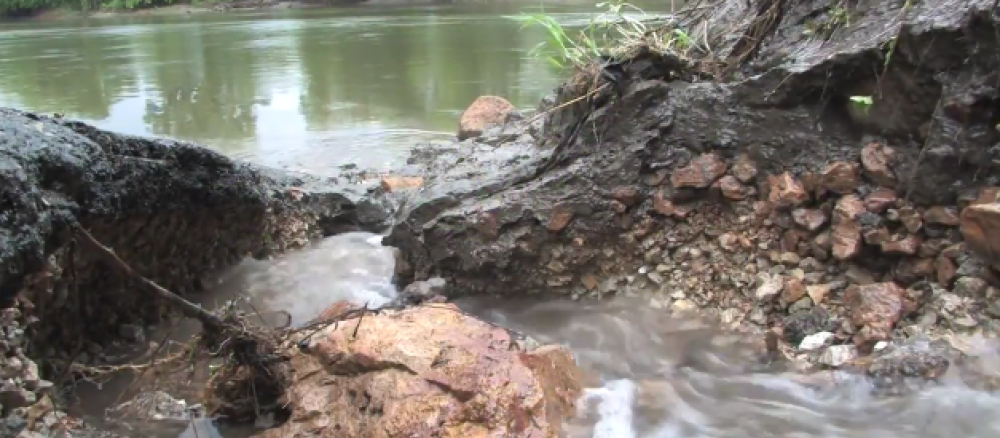Photos in the news this summer showed the dramatic flow of sediment into Lake Superior from flooding in Duluth, where torrential rains caused extensive damage. In a similar fashion, heavy rains can wash soil and other pollutants into rivers in southern and western Minnesota.
Only a few major storms can account for the majority of sediment—soil particles and other matter—in a river in a season, according to Pat Baskfield, hydrologist with the Minnesota Pollution Control Agency.
In other words, 20 minutes of hard rain can lead to weeks of murky water. That sediment can settle out anywhere along the river system, including pools, streambanks, and lakes.
In May, using his smart phone, Baskfield recorded a 20-minute rainstorm in the Watonwan River area near Mankato. Some of his footage has been incorporated into an MPCA video. As the video shows, rain water immediately started running across a bare field. The water pooled at the field’s lowest spot and formed a gully along the edge of the field. The muddy water ran through a culvert under the road, then it cascaded into a ditch that empties into the river. The video shows black water cascading from the culvert into the ditch.
“I’ve noticed over the years that when you get these high-intensity rain events, that’s what really makes these rivers dirty,” Baskfield said.
Baskfield coordinates the watershed pollutant load monitoring network in Minnesota. Through this network, several state and federal agencies collect data from all major rivers and their main tributaries to estimate the amount of pollution going into rivers.
In southern and western Minnesota, where much of the land is planted to crops, heavy rains can be devastating to water quality if they fall before crops develop a canopy of leaves that shields the soil. Above ground, that canopy of leaves absorbs the impact of large rain drops and helps reduce the rain’s force from moving soil off the field and into water ways. Below ground, the crop’s root system holds the soil in place and absorbs the rain water.
Spring is a vulnerable time for cropland. Producers can use several techniques to protect their soil and water quality.
One technique is to plant a cover crop, such as rye, after the corn and soybeans are harvested in the fall. The cover crop holds soil in place until the next spring, when farmers plant corn or soybeans through the cover crop.
According to the Minnesota Department of Agriculture, cover crops are challenging but beneficial. In addition to reducing erosion and runoff, cover crops can enhance soil fertility and suppress weeds.
Another technique is to leave residue—stalks, leaves, and other plant materials—in the field when harvesting corn and soybeans. The residue remains in place through the fall and winter. Farmers then use different tillage and planting methods in the spring to seed through the residue. Residue can be difficult to manage. For example, it can keep the ground cooler in spring, which delays planting. However, certain machinery and methods help farmers overcome these challenges. Residue helps keep soil in place and builds soil health.
Baskfield sees the benefits of residue in a neighbor’s field. That field, with its residue cover, kept its soil in place during the heavy rain in May and during the strong winds that came a few weeks later.
Unfortunately for Minnesota’s soil health and water quality, intense rainstorms are not a fluke. Climate scientists report that intense storms are occurring more frequently. Without measures to guard against these storms, rivers will continue to show spikes in sediment and other pollutants after heavy rains, causing short-term and long-term damage to the state’s natural resources.
